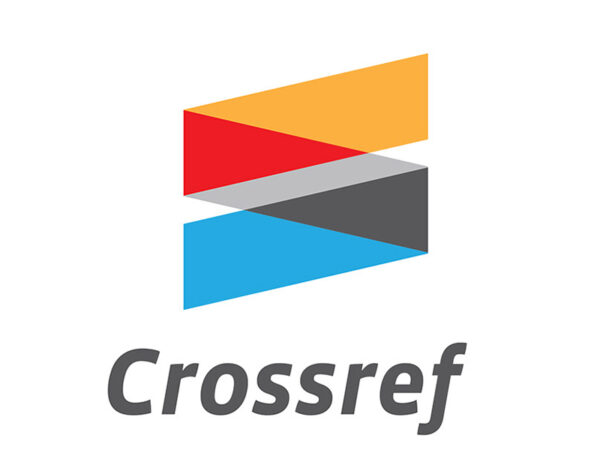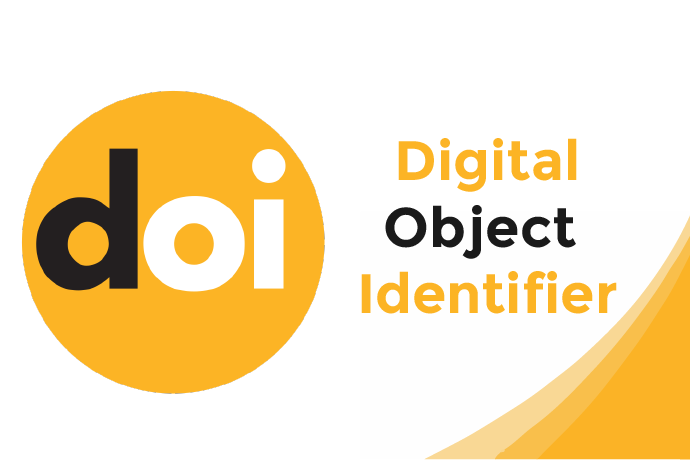Next Generation Blockchain Framework for Educational Document Security
Abstract
The handling and verification of educational documents pose significant challenges for students, employers, and
institutions. Students face difficulties managing physical documents for admissions, job applications, and attestations, while
organizations struggle to verify their authenticity. Current processes are slow, error-prone, and vulnerable to fraud. This paper
introduces a blockchain-based digital identification and verification system that leverages a decentralized ledger to ensure
data integrity, security, and accessibility. Unlike traditional and cloud-based systems, our solution eliminates third-party
dependencies, offering an immutable, tamper-proof platform. Educational institutions can input student data linked to unique
national identification numbers, enabling seamless certificate and experience verification while prioritizing user privacy.
Shorter verification times and increased stakeholder trust are the outcomes of a prototype implementation. However, adoption
costs and scalability remain limitations. This solution lowers fraud, speeds up processes, promotes environmental
sustainability, and establishes the foundation for secure, scalable credential management globally through paperless
operations.
References
[2] A. Khan and S. Malik, “Challenges in academic document attestation in Pakistan,” Educ. Admin. Quart., vol. 60, no. 4, pp. 512–523, 2024.
[3] F. Javed, H. M. Qureshi, and M. S. Farooq, “Challenges in centralized academic record systems,” IEEE Trans. Educ., vol. 67, no. 2, pp. 189–198, 2024.
[4] S. Ahmed and R. Butt, “Impact of fraudulent credentials on recruitment,” J. Employ. Stud., vol. 29, no. 1, pp. 45–56, 2025.
[5] S. Khan and A. Raza, “Environmental impact of paper-based documentation in developing nations,” Sustain. Environ. Res., vol. 35, no. 3, pp. 112–120, 2025.
[6] H. Siddiqui, “Paper consumption in educational administration,” Environ. Policy Rev., vol. 18, no. 2, pp. 78–89, 2024.
[7] Z. Rehman and T. Iqbal, “Security vulnerabilities in centralized academic portals,” IEEE Secur. Priv., vol. 22, no. 5, pp. 34–42, 2024.
[8] L. Zhang, X. Liu, and Y. Chen, “Decentralized identity frameworks for education using blockchain,” J. Netw. Comput. Appl., vol. 228, p. 103892, 2025.
[9] M. Hassan and F. Ali, “Third-party dependencies in digital verification systems,” Comput. Secur., vol. 142, p. 103678, 2024.
[10] R. Saeed, “Logistical challenges in traditional document verification,” Admin. Sci., vol. 14, no. 6, pp. 231–245, 2024.
[11] Higher Education Commission Pakistan, “Annual Report 2023–2024,” Islamabad, Pakistan, 2024.
[12] J. Lee and K. Park, “Blockchain for secure data management,” IEEE Trans. Inf. Forensics Secur., vol. 19, pp. 1234–1245, 2024.
[13] A. Gupta and S. Sharma, “Resilience of blockchain against cyberattacks,” J. Cryptol., vol. 37, no. 3, pp. 567–580, 2025.
[14] P. Kumar and R. Jain, “Smart contracts for automated verification,” IEEE Softw., vol. 41, no. 2, pp. 89–97, 2024.
[15] E. Torres and M. Garcia, “Self-sovereign identity in education,” IEEE Internet Comput., vol. 28, no. 4, pp. 56–64, 2024.
[16] S. Patel and L. Wong, “Global trends in digital identity management,” Policy Digit. Transform., vol. 12, no. 1, pp. 23–34, 2025.
[17] Pakistan Telecommunication Authority, “Telecom Indicators Report 2024,” Islamabad, Pakistan, 2024.
[18] Ministry of Information Technology and Telecommunication, “Digital Pakistan Policy 2024,” Islamabad, Pakistan, 2024.
[19] N. Arshad and K. Zaman, “Challenges in blockchain adoption in developing countries,” Technol. Soc., vol. 76, p. 102456, 2024.
[20] T. Lim and J. Chen, “Blockchain pilots in educational credentialing,” Educ. Technol. Res. Dev., vol. 72, no. 5, pp. 345–359, 2024.
[21] A. Rahman and S. Das, “Trust deficits in educational verification,” J. Educ. Policy, vol. 39, no. 2, pp. 178–192, 2025.
[22] Y. Liu and H. Zhang, “IPFS and blockchain for decentralized storage,” IEEE Trans. Cloud Comput., vol. 12, no. 3, pp. 789–800, 2024.
[23] M. Costa and F. Silva, “Privacy in blockchain-based identity systems,” IEEE Trans. Dependable Secure Comput., vol. 21, no. 4, pp. 456–467, 2024.
[24] S. Kim and J. Park, “Usability of blockchain interfaces in education,” Int. J. Hum.-Comput. Stud., vol. 182, p. 103234, 2025.
[25] R. Malik and A. Shah, “Sustainability through digital document management,” Environ. Innov. Soc. Transit., vol. 50, p. 100678, 2024.
[26] United Nations, “Sustainable Development Goals: Education and Innovation,” New York, NY, USA, 2024.
[27]. McDowell, B. (2023). How we create an international framework for privacy-preserving digital ID. Tech and Innovation.
[28]. Teixeira, A. V., & Rezende, D. A. (2023). A multidimensional information management framework for strategic digital cities: A comparative analysis of Canada and Brazil. Global Journal of Flexible Systems Management, 24(1), 107–121. https://doi.org/10.1007/s40171-022-00325-w
[29]. Schumacher, M. T. (2024). Exploring Decentralized Digital Identity An Ecosystem Perspective (Master's thesis)..
[30]. Singgalen, Y. A. (2024). Coastal and Marine Tourism Monitoring System Design using Rapid Application Development (RAD). J. Inf. Syst. Res, 5(2), 468-479.
[31]. User Profile Management System (UPMS). (2023, August). Retrieved from https://mygovuc.gov.my/myGovUc/en/user-profile-management-system-upms/
[32]. Bambacht, J., & Pouwelse, J. (2022). Web3: A decentralized societal infrastructure for identity, trust, money, and data. ArXiv. http://arxiv.org/abs/2203.00398
[33]. Prashant, M. Y., & Deepak, N. P. (2023). Integrated identity and auditing management using blockchain mechanism. Measurement: Sensors, 27, 100732.
[34]. Buttar, A. M., Shahid, M. A., Arshad, M. N., & Akbar, M. A. (2024). Decentralized Identity Management Using Blockchain Technology: Challenges and Solutions. In Blockchain Transformations: Navigating the Decentralized Protocols Era (pp. 131-166). Cham: Springer Nature Switzerland.
[35]. Guenduez, S. A. A., Mettler, T., & Schedler, K. (2023). The role of trust in the adoption of cooperative arrangement types in e-credentials markets. Information Polity, 28(1), 43–59. https://doi.org/10.3233/IP-211508
[36]. Anishchenko, M., & Oharenko, V. (2023). Economic justification of corruption risks in the field of healthcare. Baltic Journal of Economic Studies, 9(2), 40–47. https://doi.org/10.30525/2256-0742/2023-9-2-40-47
[37]. Haring, L. V., Hall, J. T., & Janssen, A. (2023). Developing a digital informed consent app: Opportunities and challenges of a new format to inform and obtain consent in public health research. Research Square.
[38]. Alnashmi, M., Salman, A., Alhumaidi, H., Yunis, M., & Al-Enezi, N. (2022). Exploring the health information management system of Kuwait: Lessons and opportunities. Applied System Innovation, 5(1). https://doi.org/10.3390/asi5010025
[39]. Chernoff, A., & Galassi, G. (2023). Digitalization: Labour markets.
[40]. Sharif, A., Ranzi, M., Carbone, R., Sciarretta, G., Marino, F. A., & Ranise, S. (2022). The eIDAS regulation: A survey of technological trends for European electronic identity schemes. Applied Sciences (Switzerland, 12)(24). MDPI. https://doi.org/10.3390/app122412679
[41]. Engelbrecht, W. (2022). A rapid forced adjustment in assessment strategy in a time of disruption: The idea, the impact, and the change. Research Gate. https://doi.org/10.29086/978-0-9869937-2-5/2022/AASBS12
[42]. Evolus. (2010). Profile management. Retrieved from https://evolus.vn/en-US/wiki/products/profile-management/profile.html
[43]. Mirzaei, P., & De Busser, E. (2024). The new F-word: The case of fragmentation in Dutch cybersecurity governance. Computer Law & Security Review, 55, 106032.
[44]. Alenezi, M. (2023). Digital learning and digital institutions in higher education. Education Sciences, 13(1). https://doi.org/10.3390/educsci13010088
[45]. Trevisan, L. V., Eustachio, J. H. P. P., Dias, B. G., Filho, W. L., & Pedrozo, E. Á. (2024). Digital transformation towards sustainability in higher education: state-of-the-art and future research insights. Environment, Development and Sustainability, 26(2), 2789-2810.
[46]. Bucăţa, G., Popescu, F., & Tileagă, C. (2022, June). Digital transformation of higher education systems. In International Conference Knowledge-Based Organization (Vol. 28, No. 1, pp. 158-168).
[47] F. Javed, H. M. Qureshi, and M. S. Farooq, “Challenges in centralized academic record systems,” IEEE Trans. Educ., vol. 67, no. 2, pp. 189–198, 2024.
[48] Z. Rehman and T. Iqbal, “Security vulnerabilities in centralized academic portals,” IEEE Secur. Priv., vol. 22, no. 5, pp. 34–42, 2024.
[49] M. Hassan and F. Ali, “Third-party dependencies in digital verification systems,” Comput. Secur., vol. 142, p. 103678, 2024.
[50] T. Lim and J. Chen, “Blockchain pilots in educational credentialing,” Educ. Technol. Res. Dev., vol. 72, no. 5, pp. 345–359, 2024.
[51] A. Gupta and S. Sharma, “Resilience of blockchain against cyberattacks,” J. Cryptol., vol. 37, no. 3, pp. 567–580, 2025.
[52] S. Kim and J. Park, “Usability of blockchain interfaces in education,” Int. J. Hum.-Comput. Stud., vol. 182, p. 103234, 2025.
[53] R. Saeed, “Logistical challenges in traditional document verification,” Admin. Sci., vol. 14, no. 6, pp. 231–245, 2024.
[54] R. Malik and A. Shah, “Sustainability through digital document management,” Environ. Innov. Soc. Transit., vol. 50, p. 100678, 2024.







